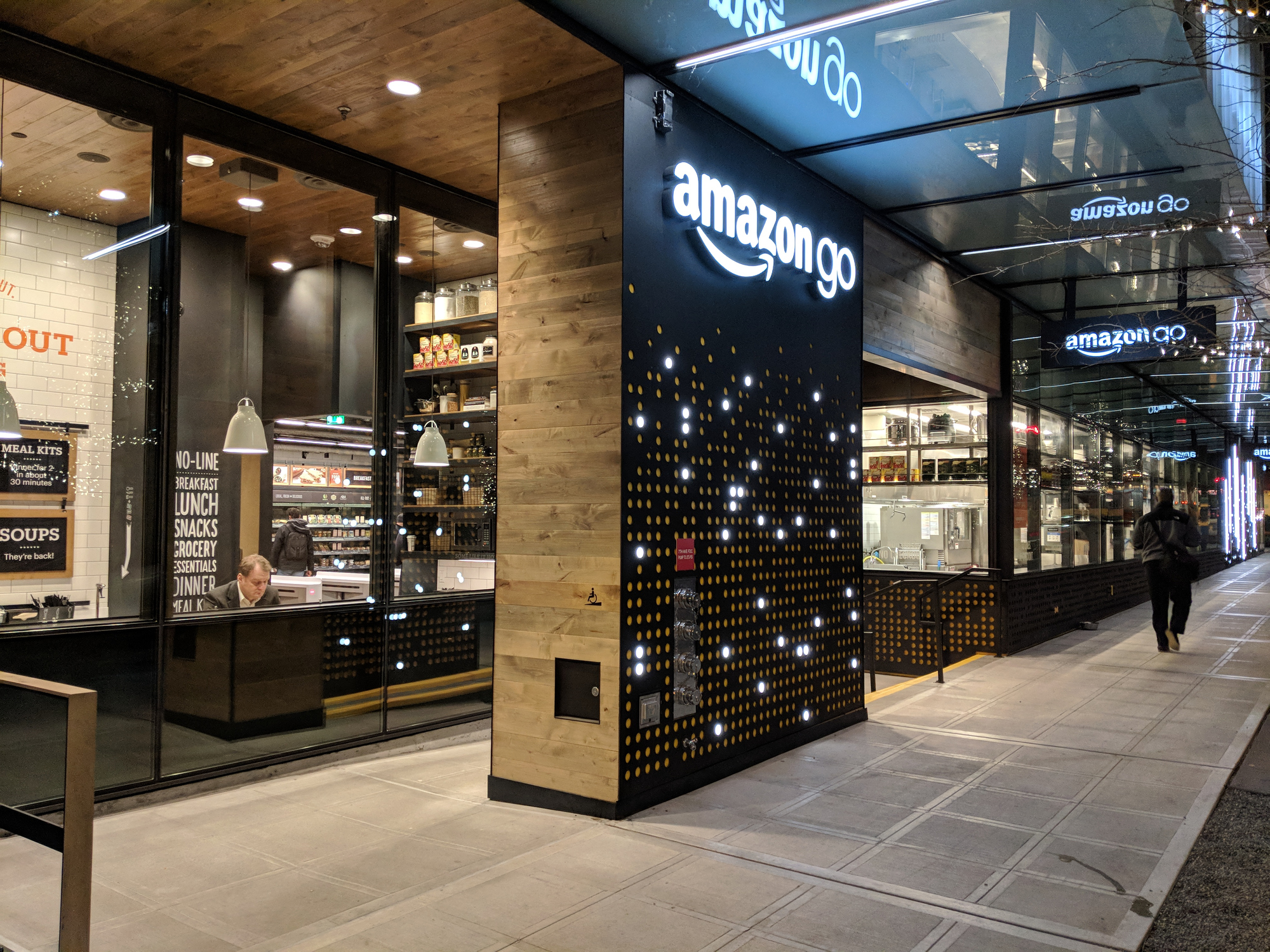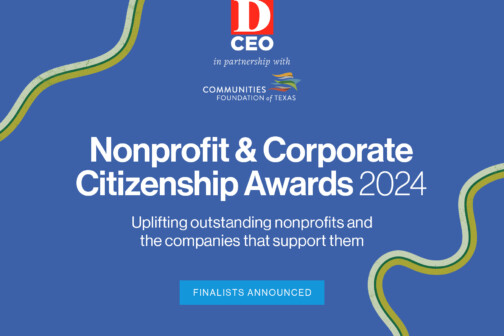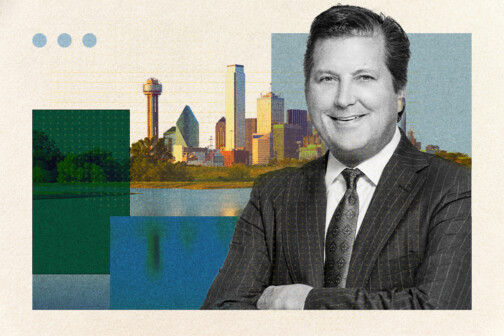Retail real estate icon Herb Weitzman and noted investment exec Anton Pil recently sat down at the George W. Bush Presidential Center to talk about the latest trends involving the economy, home ownership, consumer behaviors, and more. Pil and his team oversee alternative investments at JPMorgan Chase on behalf of clients and manage $213 billion in asset— including $54 billion in real estate.
Prior to the discussion, Weitzman released the company’s most recent retail real estate survey and provided a retail sector forecast for the year ahead.
This discussion has been edited for clarity and brevity.
WEITZMAN: “Construction costs have become so high, we’ve had to find alternative ways to cut prices. We found timber is an opportunity to do that. You work with timber, tell us about the industry and how you got involved.”
PIL: “We got into the timber business about three years ago. We now own $10 billion of forests, predominately in the United States but also in Australia and New Zealand. There were three big reasons why I wanted to get in the timber industry. The first was: trees don’t care about the Fed. From an asset perspective, if you want diversification, it’s the ultimate diversifier. We ultimately know that for all that construction, you need land. And eventually, whatever forests we own, a town or city will start impinging on it and we’ll start to be able to sell some of that land, as well.
“On the construction side, real estate building codes have changed in a number of states that now allow you to construct buildings out of wood up to as high as 16 or 20 stories high. Now, we don’t have retail that high, but we do have multifamily across the country that are becoming that high. Where I live in New York, there were two 14-story apartment buildings right next to each other going up at the same time. One was built out of steel and one was built out of wood. The one built out of wood was built about two-thirds faster than that one out of steel.
“Wood isn’t necessarily cheaper, but a carpenter is a lot cheaper than a steelworker. For us, this kind of change in building code allows for higher construction out of wood in our future. The speed of construction is faster, the labor is cheaper, and, for those of you who are in the construction business, you know that those are the key ingredients for your costs.
“We anticipate that wood construction is going to continue to grow tremendously across the country. I’ve had some some naysayers comment, ‘I don’t want to live in a wood building.’ Really? When’s the last time you knocked on the wall and thought, ‘Well, is this wood? Because if this is wood, I want nothing to do with this building.’ That doesn’t happen.
“Additionally, Europeans don’t want steel because its a very carbon-intensive industry. But wood is not. Wood captures carbon, so we’re selling a lot more wood for construction from the United States and shipping it over to Europe for construction where they have a carbon tax.”
WEITZMAN: “Inflation continues to wreak havoc, even as prices come down. What’s your outlook for the economy?”
PIL: “We think 2024 will be a decent year. Inflation is coming down slightly and the trajectory is clearly going toward that, too. I think the move from 3 percent or 2 percent inflation will be the hardest for the Fed. And that probably means the Fed is going to stay in that window for longer than most people think, but they are headed all the way down—and that could take six to 12 months.
“The good news is that unemployment is still very low and wage growth continues. This notion that the average American is overleveraged again—I’m not really buying that. The one thing Americans have figured out is this: If you give them credit, they’ll spend it. If you give them $10,000, they’ll spend the $10,000. So, this notion that the consumer is somehow tapped out is wrong.
“An important notion to consider is that about two-thirds of consumers’ debt is their mortgage. And it’s really only in America where you can get a 30-year fixed-rate mortgage—by the way, at 2.5 to 3 percent (hopefully not at 8 percent from last year). But to anyone who is a homeowner, their ability to tap their credit card is much greater than I think what history would have shown us because the bulk of their investments have been fixed at such a low rate. The flip side is also true.
“If you’re not a homeowner you are going to suffer for some time. Those people are who are tapped out—they’re the lower-middle income folks. And I think they will have an impact on spending later on in the year. Soft-goods stores or stores that are targeting the lower-middle income group, I think that’s where we’re gonna see a bit tighter conditions.”
WEITZMAN: “A lot of people are saying folks can’t afford a house anymore. But you’re saying that’s not the case?”
PIL: “There is a bit of a delay in homeownership all across the globe, but a lot of that has to do with the demographic shift that most people don’t want to talk about. People are getting married much later, which means the number of units you need for single people is bigger than it was even if you had the exact same population. If you look at how many single people there are and do the math on that, that’s what is pushing back homeownership.
“Seven or eight years ago, everything was about lofts. Nobody wanted to own anything. It was all about lofts downtown. But now those people with lofts—who probably sold their cars—are realizing lofts are the worst possible place to have a family—and now they probably need a car again. And now you look, people are in the suburbs, they’re buying homes, and community centers are some of the best performing retail projects.
“The reality is you can’t get everything on Amazon. This whole notion that somehow e-commerce is going to take over, a lot of their whitespace has already been filled. There were 1,500 malls in this country five years ago, there’s about 1,000 today. But we own 17 of the top malls in the country and I can tell you there’s a waitlist of stores to get into them. If you’re a retailer, you can’t get in.
“What we’ve heard from our retailers is that when they have a presence in a state, their online sales in that physical state will be 10 to 15 percent higher. I think you’re going to see that number get even bigger. And the reason for that is when you go online, you have so many ads. And do you know how expensive it is to get somebody to come to your website? So, what is cheaper? It’s cheaper to have a brick-and-mortar retail presence that acts as an experience that then attracts and sends people to an online store.
“To me, the the writing was on the wall in a positive way for brick-and-mortar when Amazon started to started to build real stores. When the largest online retailer decides to get into the brick-and-mortar business, it tells you something.”

WEITZMAN: “During the pandemic there were dozens of major retailers that went bankrupt, but it looks like that’s over. Should we expect anymore major bankruptcies?”
PIL: “A lot of the washout has taken place. But there are things that I do worry about longer term. I worry about the fast food chains that are cheap. And I know that sounds weird, but an American doesn’t need to buy a $1 burger—they can afford called a $12 burger. It’s not popular to say, but the average American got quite a bit wealthier during COVID—that’s why Chipotle is doing so well. People can afford a $14 burrito. And this trickles down to another weird worry of mine.
“GLP-1 drugs, medications like Ozempic and other weight-loss drugs that are actually diabetes drugs, provide me with retail insights. We can look through Chase’s anonymized data by individual—we bank more than 95 million individuals in this country—and I can identify people who are on Ozempic based on their spending patterns.
“Why should you care? Because their spending on fast food drops about 85 percent, snacks by 80 percent, soda 70 percent, and alcohol spending is down about 65 to 70 percent. These drugs do work and people are losing 15 to 20 percent of their weight. However, it changes people’s buying patterns. Analysts are predicting that 5 million people will soon be on this drug. I think they’re wrong, it’s probably going to be like 50 to 100 million across the world.
“If that happens, it’s important to remember that over the next five to 10 years, the spending patterns of that cohort will change dramatically. Twenty percent of the U.S. population drinks 80 percent of the alcohol ;and if that’s the case, then alcohol sales will struggle. Fast food sales will struggle. And your data suggest that some of the biggest growth areas for retail include gyms, so target audiences for many companies is going to change over the next five to 10 years.
“Now the question becomes, what are people going to spend their money on? I think you’re going to see gym memberships increase, beauty and a lot of spa and massage services and clothing sales will grow.
WEITZMAN: “Is there anything else that looks like a mega trend that potentially is three to five years away from having a major impact?”
PIL: “AI is going to fundamentally change so many industries. It’s not great at simple math but it is great for language and vision. And the convergence of liberal arts and science fascinates me. Someone told me the other day that AI can make up an actor and put it into a movie. That’s 101. AI is going to write the movie, direct the movie, and the movie is going to be tailored to you through your watch history—and you won’t even know it’s AI.
“That’s what’s coming. But lawyers, you should watch out, because anything to do with language is going to fundamentally change.”
Author








